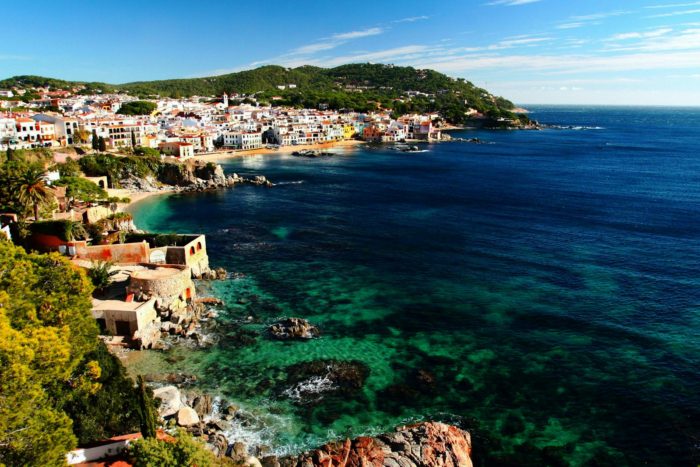
The Costa Brava, with its rugged coastline, hidden coves, and crystal-clear waters, offers an unforgettable escape into Spain’s most picturesque landscapes. Whether you’re a first-time visitor or a seasoned traveller, follow these insights for a journey that promises both adventure and tranquillity.
Why visit the Costa Brava?
Nestled in the north-eastern corner of Catalonia, Spain, the Costa Brava stretches from historic Blanes to the French border. It’s a region where the Pyrenees tumble into the Mediterranean Sea, creating a dramatic and beautiful coastline that has inspired artists, poets, and travellers for centuries.
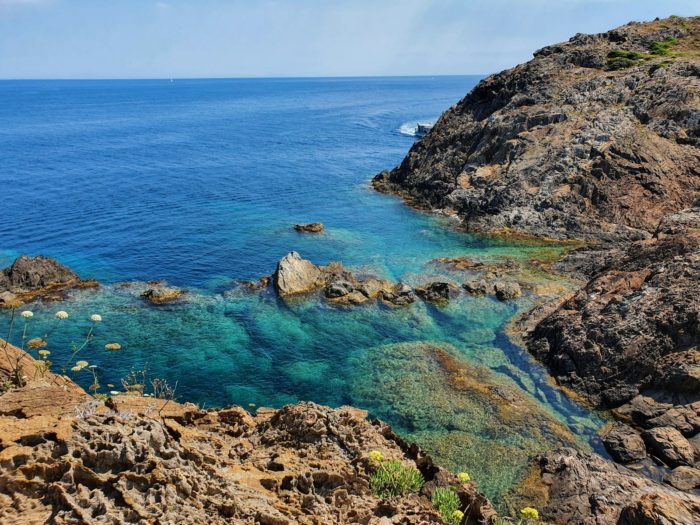
Diverse landscapes: The Costa Brava is renowned for its diverse landscapes. From secluded coves and sandy beaches to rugged cliffs and lush forests, the natural beauty of this area is unmatched. Each turn on the coastal path reveals another breath-taking view, each more splendid than the last.
Rich cultural tapestry: Beyond its physical beauty, the Costa Brava boasts a rich tapestry of history and culture. Medieval towns like Pals and Peratallada transport you back in time with their cobblestone streets and Gothic churches, while the surrealist art of Salvador Dalí finds its home in Figueres, Portlligat, and the Castle of Púbol.
Gastronomic delights: Food lovers will find paradise in the Costa Brava’s culinary scene. With a focus on fresh, local ingredients, the region’s cuisine ranges from traditional Catalan dishes to innovative dining experiences. Seafood lovers, in particular, will rejoice in the fresh catches served up from the Mediterranean.
When to visit
Choosing the right time to visit the Costa Brava can significantly enhance your experience. While the region enjoys a mild climate year-round, each season offers something unique.

Spring: This is a magical time in the Costa Brava as the countryside blooms with wildflowers and the weather begins to warm up. This season is ideal for outdoor activities like hiking and cycling, allowing you to explore the natural beauty without the summer crowds.
Summer: July and August is the peak of the tourist season, attracting visitors with its sunny weather and vibrant festivals. While this is the best time for beach activities, it’s also when the region is most crowded, so booking accommodations in advance is crucial.
Autumn: As the heat of summer subsides, the Costa Brava reveals a more tranquil side. The vineyards of the Empordà region are in harvest, making it an excellent time for wine tasting tours. The sea often remains warm enough for swimming throughout September and sometimes early October, and the reduced crowds make it easier to enjoy the area’s attractions.
Winter: The Costa Brava’s quietest season is perfect for those looking to escape the hustle and bustle. While some businesses may be closed, the mild weather and lack of crowds offer a peaceful retreat. It’s also a great time to enjoy the region’s natural parks and cultural sites. While temperatures can drop overnight, when the sun shines the days are beautifully warm.
Each season brings its own charm to the Costa Brava. Your choice will depend on the activities you’re most interested in and the type of experience you’re seeking.
Planning your itinerary
Exploring the Costa Brava, with its rich tapestry of cultural heritage, stunning natural landscapes, and vibrant local life, offers an array of experiences that delight visitors in every season. To fully embrace what this diverse region has to offer, from the surreal world of Salvador Dalí to the serene beauty of its medieval villages and breathtaking natural parks, having access to a car is highly recommended.
💡 Car rental tip: Consider renting a car for the duration of your stay. Not only does this provide the freedom to explore at your leisure, but it also opens up opportunities to discover lesser-known beaches, quaint villages off the beaten path, and scenic viewpoints that are the region’s best-kept secrets. Auto Europe compares rates between different car companies to ensure you get the best rate.
Charming Girona
Girona merits a day’s visit with its well-preserved medieval architecture. Visit Girona Cathedral, stroll along the ancient city walls for panoramic views, and lose yourself in the narrow streets of the Jewish Quarter. Dine at a local restaurant to taste traditional Catalan dishes.
The Salvador Dalí triangle
Immerse yourself in the surreal world of Salvador Dalí by visiting the Dalí Theatre-Museum in Figueres, his house in Portlligat, and the Gala Dalí Castle in Púbol – the so-called Dalí triangle. This art-filled day provides insight into the life and work of one of Catalonia’s most famous artists.
Cadaqués and Cap de Creus
A trip to Cadaqués, with its whitewashed houses and cobblestone streets, offers a glimpse into the tranquil beauty that has inspired artists for centuries. Extend your visit to the Cap de Creus Natural Park, where the Pyrenees meet the sea, offering breath-taking landscapes and outdoor activities like hiking and bird watching.
The beaches of Costa Brava
No visit to Costa Brava is complete without experiencing its renowned beaches. From the wide sandy stretches of Platja de Pals to the secluded coves like Cala Montjoi, there’s a beach to match every preference. While beach days are a hallmark of the summer months, the coastal beauty of Costa Brava can be enjoyed off-season with peaceful walks and stunning sunsets.
Medieval villages and local vineyards
Explore the medieval villages of Pals and Peratallada, where time seems to stand still. These villages offer a peaceful retreat with their stone houses, ancient fortifications, and local artisan shops. Visiting these villages provides a perfect day trip for those looking to immerse themselves in the history and charm of the Costa Brava. In the afternoon, visit a local vineyard in the Empordà region for a wine tasting session, learning about the local wine-making process.
Tailoring Your Visit
This itinerary is designed to be flexible, allowing visitors to pick and choose based on their interests and the season of their visit. Whether you’re drawn to the artistic legacy of Dalí, the historic streets of Girona, the natural wonders of Cap de Creus, the tranquil beauty of Cadaqués, or the sun-kissed beaches, Costa Brava offers enriching experiences throughout the year.
By focusing on major attractions and experiences that appeal to a wide range of visitors, this itinerary ensures that everyone, from beachgoers to cultural enthusiasts, can find something to love in Costa Brava, regardless of when they choose to visit.
💡 Additional tips for a balanced trip
- Mix and Match: Combine cultural visits with leisure activities to keep your itinerary diverse and engaging.
- Stay Flexible: Allow some flexibility in your schedule for spontaneous discoveries or simply to relax.
- Local Experiences: Seek out local experiences, from market visits to traditional festivals, to enrich your understanding of Catalan culture.
Accommodation guide: where to stay on the Costa Brava
Choosing the right accommodation is essential for a memorable trip to the Costa Brava. The region offers a wide range of options to suit every taste and budget, from luxury resorts to charming bed and breakfasts. Here’s a guide to help you find the perfect place to stay during your visit.
Luxury hotels: For those seeking a touch of luxury, the Costa Brava boasts several high-end hotels that offer exquisite rooms, exceptional service, and stunning coastal views. Hotel Alàbriga in S’Agaró and Hostal de la Gavina are standout choices, providing guests with a truly indulgent experience.
Boutique hotels: Boutique hotels are ideal for travellers looking for a more personalized stay. Hotel Aiguaclara in Begur and Casa Granados in Tossa de Mar are examples of such establishments, offering unique charm and a cosy atmosphere, often housed in beautifully restored buildings.
Hostals: For a homey feel, consider staying in an hostal. These accommodations are often family-run and provide a great opportunity to experience local hospitality. La Masia de Tamariu in Tamariu is an excellent choice, offering comfortable rooms and delicious breakfasts.
Holiday rentals: Holiday rentals are a fantastic option for families or groups seeking more space and flexibility. Platforms such as Booking.com and Tripadvisor list a variety of properties in the Costa Brava, from beachfront villas to cosy apartments in the heart of medieval towns.
Camping: For nature lovers, camping (or glamping) offers a unique way to experience the Costa Brava’s natural beauty. Sites like Camping Cala Llevadó in Tossa de Mar offer traditional camping spots, as well as more luxurious glamping options with all the comforts of home.
Choosing your base: Depending on your itinerary, you may opt to stay in one location or move around. Girona and Begur make great bases for exploring inland attractions and the coast, respectively. Consider your planned activities and travel style when selecting your accommodation.
💡 Tips for booking:
- Book early: Especially in the summer months, accommodations can fill up quickly.
- Read reviews: Platforms like TripAdvisor offer valuable insights from previous guests.
- Consider location: Proximity to attractions, beaches, or dining options can enhance your stay.
Dining and culinary experiences on the Costa Brava
The Costa Brava is not just a feast for the eyes but also a paradise for the palate. The region’s culinary landscape is as diverse as its geography, offering everything from traditional Catalan dishes to innovative cuisine that has earned it a reputation as a gastronomic hotspot. Here’s how to make the most of the dining experiences in Costa Brava.
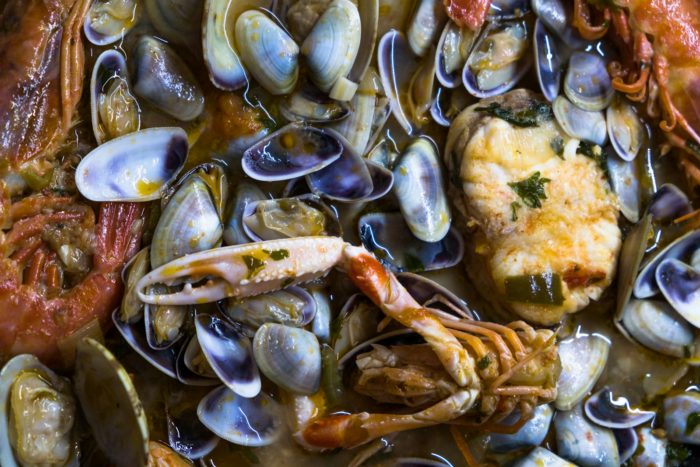
Traditional Catalan cuisine: At the heart of Costa Brava’s culinary scene are the traditional dishes that reflect the region’s rich history and cultural influences. Don’t miss trying pa amb tomàquet (bread with tomato), suquet de peix (fish stew), and fideuà (a noodle dish similar to paella). Restaurants like El Celler de Can Roca in Girona, albeit a three-Michelin-starred restaurant, offer an upscale take on traditional flavours, while local taverns serve hearty, home-cooked meals.
Seafood and beachfront dining: Given its extensive coastline, it’s no surprise that seafood is a staple in the Costa Brava. Fresh catches are brought in daily, gracing the tables of both humble xiringuitos (beach bars) and elegant seaside restaurants. La Escalopa in Palamós, known for its superb grilled fish and seafood paellas, provides diners with stunning sea views.
Wine and Cava tasting: The Empordà wine region is famed for its wines and cavas. Many wineries, such as Celler Martin Faixó in Cadaqués, welcome visitors for tours and tastings. Exploring these vineyards is not only a way to enjoy exceptional wines but also to learn about the local winemaking tradition.
Michelin-Starred experiences: For those looking to splurge on a truly unforgettable dining experience, the Costa Brava boasts several Michelin-starred restaurants. Besides the aforementioned El Celler de Can Roca, Miramar in Llançà offers innovative dishes in a setting that overlooks the Mediterranean.
Local markets and cooking classes: Immerse yourself in the local culture by visiting food markets and taking cooking classes. Markets like the Mercat del Lleó in Girona offer fresh, local produce, while cooking schools provide hands-on experiences to learn how to prepare Catalan dishes.
💡 Tips for culinary exploration:
- Reservations: Especially for popular or Michelin-starred restaurants, make reservations well in advance.
- Local Recommendations: Ask locals for their dining recommendations to discover hidden gems.
- Food Festivals: Keep an eye out for food festivals and culinary events, which are great opportunities to sample a wide variety of dishes.
Exploring the Costa Brava through its culinary offerings is an adventure in itself, revealing the flavours, traditions, and innovations that make this region a must-visit for food enthusiasts.
Activities and attractions: discovering Costa Brava’s best
The Costa Brava, a blend of natural beauty and rich history, offers an array of activities and attractions for every type of traveller. Whether you’re drawn to the tranquillity of secluded beaches, the adventure of outdoor sports, or the allure of historical sites, this region promises memorable experiences. Let’s dive into the must-visit attractions and activities in Costa Brava.
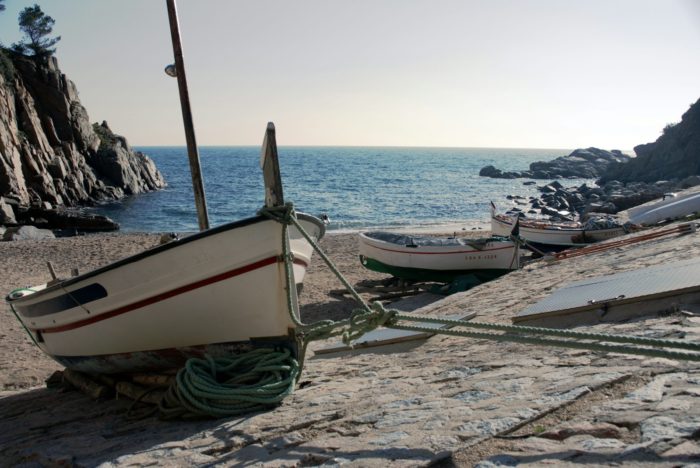
Beaches and coastal beauty: The coastline is the crown jewel of the Costa Brava, boasting some of the most beautiful beaches in Spain. Spend your days sunbathing, swimming in crystal-clear waters, or exploring the rocky coves by kayak.
Hiking and nature trails: For nature enthusiasts, the Costa Brava offers a network of hiking trails that traverse its diverse landscapes. The Camí de Ronda, a coastal path that links many of the region’s beaches and coves, provides stunning sea views. Meanwhile, the natural parks of Cap de Creus and Aiguamolls de l’Empordà offer trails through unique geological formations and birdwatching opportunities.
Historical sites and museums: Dive into the Costa Brava’s rich past by visiting its historical sites and museums. The Ruins of Empúries offer a fascinating glimpse into Greek and Roman civilizations, while the medieval town of Besalú features a well-preserved Romanesque bridge and Jewish baths. Don’t forget the Salvador Dalí Museum in Figueres, a must-visit for art lovers.
Adventure sports: The rugged terrain and open waters of the Costa Brava make it an ideal destination for adventure sports. From skydiving in Empuriabrava, known as the skydiving capital of Europe, to windsurfing and sailing in the Bay of Roses, adrenaline seekers will find plenty of thrills.
Local festivals and events: To truly experience the vibrant culture of the Costa Brava, plan your visit around local festivals and events. The Festa Major de Sant Pere in Roses celebrates the town’s patron saint with fireworks, music, and dancing. Meanwhile, the carnival season in February or March brings colourful parades and festivities to the streets of many towns.
Relaxation and wellness: For those seeking relaxation, the Costa Brava’s wellness retreats and spas offer the perfect escape. Indulge in treatments that use local products like olive oil and wine, or participate in a yoga retreat overlooking the Mediterranean.
Exploring the Costa Brava means embarking on a journey filled with diverse experiences, from the serenity of its beaches to the excitement of its festivals and the intrigue of its historical sites.
Local tips and cultural etiquette: navigating Costa Brava like a pro
Travelling to a new destination is always an adventure, and understanding the local customs and etiquette can significantly enhance your experience. The Costa Brava, with its rich Catalan culture and laid-back Mediterranean lifestyle, is no exception. Here are some essential tips and cultural insights to help you navigate this beautiful region like a local.
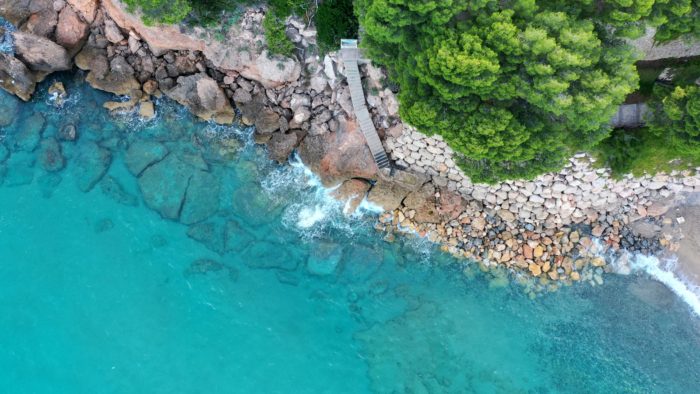
Understanding local timings: One of the first things you’ll notice in Costa Brava, as in much of Spain, is the different approach to time. Meals are enjoyed later, with lunch typically between 2 pm and 4 pm and dinner not before 9 pm. Embrace this leisurely pace; it’s a perfect excuse to indulge in a siesta or a late-afternoon beach visit.
Respect for local language and customs: While Spanish is widely spoken, Catalan is the first language of the region. Showing effort in using simple Catalan phrases like “Bon dia” (Good morning) or “Gràcies” (Thank you) can go a long way in connecting with locals. Also, respect local customs such as greeting shopkeepers upon entering a store and dressing modestly when not on the beach.
Sustainable tourism practices: The Costa Brava’s natural and cultural landscapes are treasures to be preserved. Engage in sustainable tourism by respecting protected areas, using eco-friendly transport options where possible, and supporting local businesses. Participating in beach clean-ups or choosing accommodations that prioritize sustainability can make a positive impact.
Exploring beyond the tourist traps: While the Costa Brava’s popular sites are a must-visit, don’t be afraid to explore off the beaten path. Discovering small villages, local markets, and hidden beaches can provide a more authentic and memorable experience. Ask locals for recommendations; you might find your new favourite spot through their insider knowledge.
Dining etiquette: When dining out, remember that tipping is appreciated but not as customary or substantial as in other countries. A few coins or rounding up the bill is generally considered sufficient. Also, meals are a time for relaxation and enjoyment, so don’t rush—savour the flavours and the company.
Participation in local festivals: Engaging in local festivals and events is a fantastic way to experience the region’s culture. Be respectful of traditions and participate fully—whether it’s wearing the festival attire, dancing to local music, or sampling traditional foods.
These local tips and insights into the cultural etiquette of Costa Brava are designed to enrich your travel experience, allowing you to immerse yourself fully in the beauty and diversity of the region.





